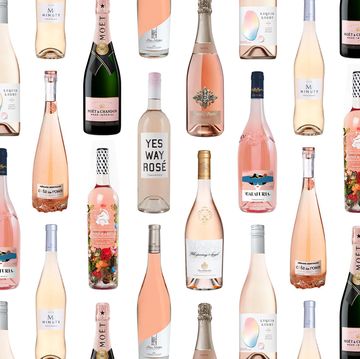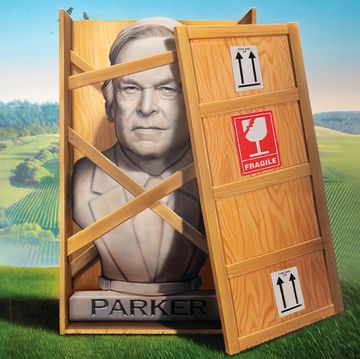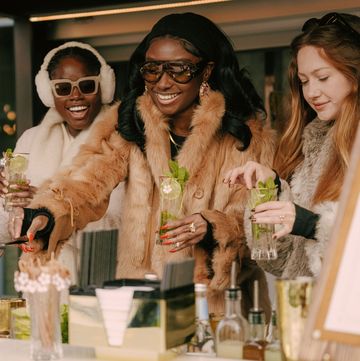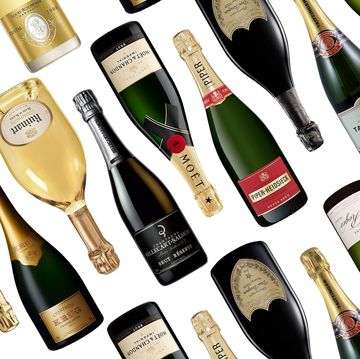Whiskey lovers the world over, get ready to pour a celebratory glass in orbit.
You can now, in theory, sip an after-dinner pour of a fine single malt while floating weightlessly miles about the surface of the earth. It's a bigger accomplishment than it seems, given the mass of physics problems presented by the idea of filling a glass in space.
"The behavior of fluids in microgravity is one of the most researched aspects of space travel," says Open Space Agency founder James Parr. "With fluids, everything we expect to happen, doesn't."
Parr and his team, in conjunction with Ballantine's whiskey, designed a glass that in microgravity conditions will allow the simple pleasure of sipping a drink, without a tube.
[youtube ]https://www.youtube.com/watch?t=122&v=uzWla2dXI_k[/youtube]
No word on how you'd add ice if you wanted to.
Drinking in space is probably the first great challenge of a new era of space travel: the era when function begins to allow for form as companies like SpaceX and Virgin Galactic try to market the next great frontier for your next vacation.
And it might have surprising benefits to connoisseurs. One of the biggest draws of space sipping to whiskey lovers might come in the form of more tolerance for peat for those who might shy from smokier scotch whisky. Parr says your senses of taste and smell will be more muted in space because of the effects of low gravity on the body. "Within the body, liquids redistribute equally. Rather than being pulled down," he explains, "they move to fill the gaps in the head—particularly the sinuses—a process that feels a bit like having a cold. This impedes the ability to taste and smell as normal and so astronauts reportedly crave spicier and punchier flavors."
The glass is the first of many small improvements of quality of life and leisure for future space travelers, as companies around the world compete in a private tourism space race as exciting as, well, the last space race. And maybe more so, because this one could really lead to anyone getting a ride to the last great frontier.
"In the next decade tourism to suborbital altitudes will become available for well-heeled adrenaline junkies, with a number of organizations—like Virgin Galactic—offering trips to the edge of space," says Parr. "These trips will appeal more to Silicon Valley [entrepreneurs] than prudent baby boomer investors, but they will still come with luxury trappings such as exclusive memberships and six-star treatment on the ground."
On the ground is an important qualifier. No matter what level of service a patron is used to, there are a lot of limitations to space travel.
That's why the whiskey glass is such an interesting achievement--maybe the first perfectly encapsulated, 21st-century example of the cart being put before the horse.
Another company, World View, will be getting its customers more or less the same view, without weightlessness or the need for much preparation. The company designed upper atmosphere travel that uses balloons to reach 100,000 feet before sailing back down to earth, all while you enjoy cocktails. CEO Jane Poynter has said, "I'm looking forward to sitting there and drinking my favorite Champagne while looking out at the earth." With a smooth journey devoid of g-forces or rocket launches, World View says it will be able to offer "practically any snack or beverage without fear of it floating off or making a mess."
Parr believes we're at least a decade away from standardized (weightless) space travel for civilians, in the sense that you or I could book something with a deposit tomorrow. "In 2025 or so," he says, "the first dedicated private space stations will be launched and these will certainly be aimed at the space tourism market."
Those stations, though, won't have the sorts of amenities figured out that we're used to for the same money. Going to the bathroom in space, showering, sleeping—these are all areas where astronauts and travelers of the near future will be making do. "It won't be the Ritz," says Parr. "However, it will have a much better view."
Space travel, nonetheless, is something to be celebrated, the same way you might celebrate summiting a mountain or christening a new boat. And those little amenities will matter.
Of course no one's going to be trying the glass out anytime soon, even under the guise of research. Parr says there's a way to get a glass onboard now, but it wouldn't do anyone any good. "There is a 3D printer on the ISS (International Space Station) that is run by an organization called Made in Space that we could potentially use. Unfortunately, on the ISS it won't be with whisky—as alcohol isn't permitted up there."
Still, planning ahead is important, even if it appears overconfident. If you don't see the importance, remember that flight crews planned for how to land the shuttle before they ever got it into orbit.
That's why these little accomplishments are a giant leap. To extend the metaphor a bit, you don't want to bring a bottle of wine to the party, only to realize you've left the cork screw back home.
Parr is hopeful he'll get to see it tested sooner rather than later. "Hopefully," he says, "we'll be able to test the full functionality of the glass in microgravity by 3D printing it in orbit in a private space station within the next decade. Within the next 10 years there will be space hotels (made by a company called Bigelow Aerospace) that will be interested in offering their customers a wee zero-g dram."
But maybe we'll see it happen sooner. "One of the slightly unnerving things about space travel is how much bacteria seem to love it," says Parr. "The space industry takes cleanliness very seriously (think bunny suits at work) and this will have to be extended to any tourists. If there is any hitchhiking across the galaxy, it will be with plenty of antibacterial gel and good hand hygiene."
"Whiskey might come in handy here too," he says. "It's an excellent antibacterial."














